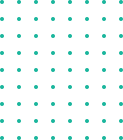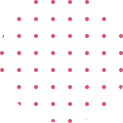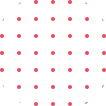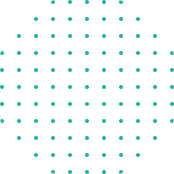Matlab Projects for Beginners and Experts
Overview
MATLAB is widely used in multiple domains such as image processing, signal processing, control engineering, natural sciences, finance, mechanical engineering, academic, research, and industrial enterprises, and the list goes on. Lots of engineers and researchers use MATLAB to analyze and design systems and products. Students who are aspiring to build careers in MATLAB can think of developing projects using MATLAB.
MATLAB Project Ideas & Topics For Beginners and experts.
CITL tech varsity, Bangalore offers Classroom / Online project training on Matlab based 2023 IEEE projects on Image processing, Matlab based 2023 IEEE projects on Communication, Matlab based IEEE 2022 / 2023 / projects on Wireless Communication for M.Tech Students in Bangalore.We have the latest ECE Matlab projects and simulation projects for ece for electronics and communication students..
Millions of engineers and scientists worldwide use MATLAB to analyse and design the systems and products transforming our world. The more you experiment with different Matlab-based projects, the more knowledge you gain. we have a huge list of projects using MATLAB and Matlab projects with source code. Matlab-based Digital image processing projects and Matlab image processing projects with source code will help explore the different ideas and enhance the features of the project.
We have MATLAB projects of multiple skill levels. Whether you’re a beginner or an expert, you will projects in, Matlab simulation projects, simulation projects for ece, MatLab Simulink projects, simulation projects for EEE, Matlab projects for EEE,Matlab mini-projects, digital image processing projects using MatLab,Matlab projects for ece with source code, MatLab projects for engineering students
What is Matlab?
MATLAB means Matrix Laboratory. It is a high-performance interactive language widely used for engineering and computation. Engineers and scientists use this tool for matrix manipulations, plotting functions, implementation of algorithms, and creation of user interfaces. MATLAB is a powerful tool that makes it possible to write a powerful program in a few lines for relatively complex problems.
Advantages Of Matlab?
Since Matlab is a very powerful tool and widely used in almost all the domains to realize innovative products and solutions, some of the examples that are being used in the industry are
- 5G
- BIGDATA
- INDUSTRY 4.0
- ARTIFICIAL INTELLIGENCE
- COMPUTER VISION
- ROBOTICS
- DRONES
- AUTONOMOUS VEHICLES
Top 20 Matlab Project ideas for Engineering students 2023
1.Classification of Brain Tumors Using a Hybrid Feature Extraction Method with Regularized Extreme Learning Machine.
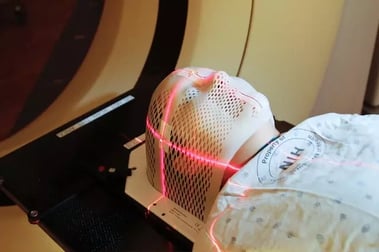
Classification of brain cancer is an essential step dependent on the physician's knowledge and experience. To assist radiologists and physicians in identifying brain tumors, a system for automated tumor classification is essential. However, the accuracy of current systems must be enhanced so that suitable treatments can be administered. In this paper, we propose a hybrid feature extraction method with extreme machine learning regularization for developing an accurate brain tumor classification strategy.
The method begins by extracting features from brain images using the hybrid feature extraction method; then, computing the covariance matrix of these features in order to project them into a new significant set of features using principal component analysis (PCA). The classification of the type of brain tumor is completed using a regularized extreme learning machine (RELM). For the purpose of evaluating and contrasting the proposed method, a series of experiments are performed on a new public dataset of brain images. The performance in terms of classification accuracy increased from 91.51% to 94.233% during the random holdout technique experiment, proving that the approach is more effective than existing state-of-the-art approaches.
Looking for Project Development Guide ? , Join Our Next Batch for End to end Advise from Experts
2.Project on Fingerprint Recognition Using MATLAB
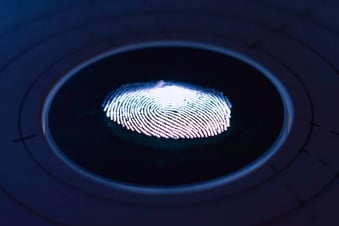
One type of biometric technology used to compare the fingerprints of two humans is fingerprint recognition. These are primarily employed to identify the individual's uniqueness and consistency. In a digital computer, images can be manipulated through the DIP (Digital image processing) process, which can be obtained by developing a computer-based algorithm for image processing. It is a technology widely used in digital image processing, specifically for feature extraction, pattern recognition, morphology, and segmentation.
3.Application of Grayscale Co-occurrence Matrix (GLCM) Method and Neural Network Algorithm for Classification of Quality Type of Guava Leaves as Traditional Medicine.
There are still many individuals who use traditional medicine, such as guava leaves as an anti-diarrhea remedy. However, different types of guava leaves have different qualities for use in traditional medicine, and different types of guava leaves have distinct leaf shape characteristics, making it difficult to distinguish the quality of the leaves.
This study aimed to categories the quality of guava leaf species into "good" and "bad" categories. The method utilized in this study begins with data collection, followed by Pre-Processing. After performing Pre-Processing, the GLCM method will be implemented with the Matlab application.
The application of the GLCM method will produce a data matrix, which will be used in the implementation of the neural network algorithm on Rapidminer for the classification process, and will yield an accuracy value. This study generates a number of data attributes, including Angular Second Moment (ASM) as data attribute
-
Contrast as data attribute
-
Inverse Different Moment (IDM) as data attribute
-
Entropy as data attribute
-
and Correlation as data attribute
-
for the sample type.
Guava was evaluated, and the application of the neural network algorithm in this research produced an accuracy of 95%.
4.Brain Tumor Detection Using Inception and Optimization
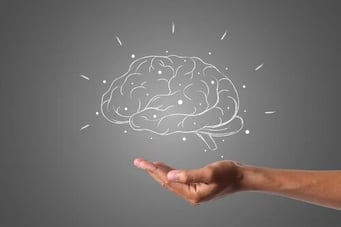
Brain tumors are among the deadliest diseases that can affect humans. The detection of a brain tumor as early as possible is crucial for its treatment. The precise locations and spread area of the tumor have been identified. A tumor is detected by observing that its location has a higher intensity. In this implementation, the system's input is considered to be an MRI scan image.
The majority of existing methods are incapable of detecting small tumors and accurately identifying abnormal brain tissue growth. To address these limitations, a method involving image pre-processing, post-processing, and inception-optimization as the three primary processes in the implementation of tumor detection has been proposed.
In the preprocessing phase, image enhancement techniques such as noise reduction, high-pass filtering, median filtering, and deblurring are utilized. Post-processing includes thresholding, segmentation using the watershed method, and morphological operations. Using the inception and optimization approach, the implemented system is trained from multiple angles, and the precise location of the tumor is determined. The proposed method's performance is evaluated in terms of precision, recall, tumor size, and accuracy. The proposed method surpasses existing practices.
5.Extraction of Histogram Features for Edge Detection
Where the intensity values of an image abruptly change from low to high or vice versa is an edge. The edge itself is located in the middle of this transition. Edge detection remains a challenge in computer vision despite recent advances. An image with excessive brightness and contrast cannot be applied. This paper presents a new method for reducing burdensomeness based on the standard deviation histogram feature. The proposed method extracts histogram features from the input image to prepare it for edge detection approaches.
The proposed method is distinguished by its simplicity and functionality.
The authors use twenty standard MATLAB images in addition to ADNI brain images. The authors use the Canny edge detection method to identify edges that are not detected by the proposed method. Authors evaluate and justify edge quality using edge detection evaluation metrics such as Figure of Merit (FOM), Structural Similarity Index Metric (SSIM), Peak Signal to Noise Ratio (PSNR), and Mean Square Error (MSE) measures. The experimental results demonstrate that the proposed method outperforms both traditional and fractional-order edge detection methods in terms of visual and statistical edge quality.
6.System Design for Weapon Detection
Each year, a large number of individuals throughout the world work to end gun violence. In response, the "Design of Weapon Detection Using AI" proposal was made. X-ray screening of baggage could be a high-priority task that aids in reducing the likelihood of wrongdoing and fear-based criminal acts.
Manual discovery of dangerous items is tedious due to the fact that only a small number of bags contain dangers, and the process requires a high level of concentration. This article proposes a method for detecting threats using a single X-ray image; a threat object can be automatically identified.
Based on implicit form models, the technology was originally designed to recognize objects in images. The detection method utilizes a visual lexicon and event structure derived from a preparation dataset containing agent X-beam images of the to be identified hazardous object. Using our technology, a single grayscale X-ray image captured by a single piece of energy collection equipment can be processed.
Object localization and proof of distinction are crucial components of the PC vision work process. This study presents a component-based approach that uses "Speeded up Robust Features" to distinguish an item in a jumbled scene and a bag-of-words model to recognize the item incrementally.
7.Hardware Implementation of Real-Time Object Tracking that is Efficient
![]()
This paper describes a novel hardware architecture for the MOSSE (minimum output squared sum of error) tracker algorithm. The proposed hardware architecture is constructed by generating hardware blocks from C++ code using a high-level synthesis (HLS) technique. In addition, real-time testing and verification are performed using a 16nm technology node FPGA device.
Utilized is a microbolometer thermal imaging sensor with a pixel pitch of 17 m, a video resolution of 640480, and a frame rate of 30 frames per second (fps). Using the HLS instrument, the maximum clock frequency and frame rate of 300 MHz and 60 fps, respectively, are attained. Hardware and software implementations of register transfer level (RTL) and Matlab simulations have negligible differences. For consumer electronics applications, experimental results demonstrate that the proposed architecture strikes a balance between hardware resource utilization and target tracking precision.
8.Using LabVIEW on USRP-2942R to implement Multi-Channel Energy Detection Spectrum Sensing Technique in Cognitive Radio Networks
The concept of cognitive radio plays a significant role in the efficient use of radio frequency spectrum, particularly when the primary user (PU) who purchased or rented the frequency band is not fully utilising the frequency band. Consequently, spectrum sensing assists cognitive radio frameworks in identifying the free portions of the spectrum.
To utilize them without interfering with the PU. In this paper, the energy detection spectrum sensing technique that detects the presence/absence of PUs is implemented using the LabVIEW platform and the universal software radio peripheral (USRP).
Two National Instruments USRP-2942R transceivers (400 MHz–4.4 GHz) are used to transmit/receive the signal; each has two channels that allow for the transmission of multiple signals and the accurate detection of those signals at the receiver. Since the industrial, scientific, and medical (ISM) spectrum is free, it is utilized.
Several trials are conducted to determine whether the PU signal is detected; the results of the detectors are compared to a threshold value. If no primary user (PU) signal is detected, the secondary user (SU) may use the channel.
9.Digital Watermarking Image Employing Discrete Wavelet and Discrete Cosine Transforms with Noise Identification

The security of digital multimedia content has become a major concern in the modern era. Concurrently, the crime rate is increasing daily, and cybercrime is among them. Currently, criminals use images to commit a variety of crimes at various times. Consequently, innocent individuals are acknowledging it. This study contributes significantly to the field of image processing.
This paper will discuss copyright protection for images. Also, what type of noise and histograms are present in an image. Therefore, criminals cannot easily harass individuals, and anyone can become a criminal without committing a crime. This paper will utilize watermarking to safeguard its copyright. Two techniques, DWT and DCT, are used to add a watermark to an original image.
The proposed method separates the original image into low- and high-frequency components using a discrete wavelet transform on a single level (DWT). The mean of each sub band is determined. The discrete wavelet transform is used to embed a watermark into the one-level low-low (LL), high-low (HL), low-high (LH), and high-high (HH) sub bands of the original image.Another watermark for images that employs discrete cosine transforms. Using discrete cosine transforms, discrete wavelet transforms, noise identification, and histograms, this paper discusses the challenges and requirements for modelling a figure in the MATLAB watermark decoding system. Copyright protection is listed as the primary copyright protection method for both the original image and the watermarked image in this study.
10.Comparison of Prewitt and Sobel Algorithms for Improving the Accuracy of Image Edge Detection Using Prewitt Algorithm
The purpose of this study is to improve the accuracy of edge detection in images using the prewitt and sobel analysis methods. Materials and Procedures: To determine the accuracy of edge detection in an image, a dataset of images is divided into two groups, with each group containing 20 samples collected using a Matlab simulation tool and subjected to filters to remove noisy data.
The illustration size for two groups is calculated using G power with 80% pretest power and =0.05. Prewitt has a mean edge detection accuracy of 85%, while Sobel has a mean edge detection accuracy of 71% (P0.05). Conclusion: For the provided images, the proposed prewitt algorithm outperforms the sobel algorithm significantly.
11.CSMA's random backoff mechanism
In Wireless local area networks (WLANs), an access point (AP) and stations (STAs) may transmit the data frame in a basic service set (BSS) using carrier sense multiple access with collision avoidance (CSMA/CD). When there are a large number of STAs with high traffic in the BSS, the throughput from an AP to a STA will decrease because the STA's transmission opportunities will be severely constrained.
We implemented a model of the CSMA collision control protocol in order to allocate bandwidth for the downlink from the AP to the STAs during heavy traffic. The implemented model permits the derivation of a contention window (CW) size at AP with a random back-off algorithm such that the downlink bandwidth is guaranteed even in the presence of bidirectional saturated traffic.
12.A Machine Learning-Based Method for Alzheimer's Disease Detection Using Analysis of the Hippocampus Region from an MRI Scan
Alzheimer's Disease is a progressive and irreversible neurodegenerative disorder that is the leading cause of dementia in people aged 65 and older. Alzheimer's disease must be detected at the prodromal stage in order to prevent severe brain damage to the patient. In this paper, a Machine Learning-based method for detecting Alzheimer's disease from MRI is proposed.
The proposed method extracts texture and shape features of the Hippocampus region from MRI scans and employs a Neural Network as a Multi-Class Classifier for detecting the different stages of Alzheimer's disease. The proposed method is currently being implemented, and it is anticipated that it will provide greater precision than conventional methods.
13.Multi-objective optimization of a single-story family home's floor plan, taking position and orientation into account.
Utilizing rigorous mathematical optimization techniques to enhance the architectural layout for a variety of objectives is gaining researchers' attention. Nonetheless, this optimization is typically reduced to a much simpler and better-defined problem, such as facility layout optimization, quadratic assignment problem, or rectangle partitioning.
However, architects are typically skeptical of such approaches because they produce solutions devoid of certain architectural characteristics. This paper proposes a framework for optimizing architectural functional layout (FL) for the following objectives: functionality (defined by users), insolation (calculated based on geographical conditions), outside view attractiveness (assessed on-site), and external noise (measured on-site). The novel contributions of this paper are the incorporation of the latter two and the simultaneous optimization of FLs for objectives specific to the site: position and orientation.
First, a set of potential FLs is generated, and then they are evaluated for optimal placement and orientation on a given site. Optimality is conceptualized here as the maximization of a real-valued objective function that combines the user's satisfaction with the exterior views, noise reduction, and insolation preference. The significance of these factors for each room type is determined by the user (as weights).Presented is a case study of an existing site.
The view quality was arbitrarily evaluated, and the noise map was evaluated by measuring the A-weighted equivalent sound level. The application of a general gradient-based method for locating optimal and near-optimal solutions. This optimization returns to the user a set of room configurations with their locations and orientations on the site for final selection.
14.Detection of Diabetic Retinopathy Using Fundus Image with Ground-Truth Segmentation
Automated analysis of lesions in retinal images could aid in the early diagnosis and screening of the prevalent condition Diabetic Retinopathy (DR). This study presents dependable and operationally efficient techniques for locating distinct characteristics and lesions in a fundus retinal image. To distinguish between elements with similar intensity characteristics, geometric properties and relationships were utilised. The retina was imaged and evaluated appropriately by trained personnel.
Exam frequency was determined by the severity of diabetic retinopathy, which in turn influences the rate of progress. Due to a severe lack of qualified monitors, computer-assisted surveillance has become necessary. Researchers propose a new requirement for detecting the optical disc in which they first identify the major blood vessels and use their crossing to approximate the disc's size. Color characteristics are used to improve image localization.
Using various morphological techniques, researchers demonstrated that several of the characteristics, including blood vessels, exudates, micro aneurysms, and hemorrhages, could be identified quite precisely.
On a dataset of 516 images with varying comparison, illumination, and disease phases, the method demonstrated a success rate of 97.1 percent for optic disc navigation, 95.7% and 94.2 percent sensitivity and specificity for exudate diagnosis, and 95.1 and 90.5 percent sensitivity and specificity for micro aneurysm/hemorrhage diagnosis. These systems function similarly to existing systems, indicating that these technologies will be deployed soon.
15.ML-Based Segmentation and Classification of Cervical Cancer Cells
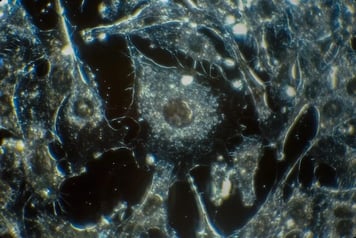
Currently, researchers are focusing on the suitability of Ensemble Learning (EL) and Transfer Learning (TL) techniques for determining cervical histopathology photographs. However, few studies have described the stages of separation in cervical histopathological photographs.
Accordingly, in this study, we recommend an Ensembled Transfer Learning (ETL) shape that clearly explains the individual histopathological images of the cervical cervix.
In addition, the setup includes the Exception, Inception-V3, Resnet-50, and VCG-16 models.
To support the execution order at that point, a weighted EL method is presented. To proceed with the proposed calculation, a dataset containing approximately 500 images recolored via three immunohistochemistry techniques (Vascular endothelial growth factor-VEGF, Hypoxia-Inducible Factor-HIF, and Aquaporins-AQP) is employed. During testing, the maximum accuracy for recoloring AQP images and VEGF images is 97.03% and 98.61%, respectively. A final test for the classification of harmless cells from dangerous ones has been completed on the Herlev dataset with a 98.37% accuracy rate.
16.Monitoring Leaf Health and Detecting Diseases Using Image Processing
Identifying the confirmation of leaf spot identification through image processing is also one of the most crucial factors in protecting plants from a variety of diseases. Testing for leaf disturbance involves examining the visible patterns that appear on a plant's leaves.
Farmers need healthy crops to survive in the United States, and we observe how farmers deal with the many diseases that can affect their crops. This requires farmers to expend some external energy over time.Consequently, the image is utilized in the field of leaf diseases.
Methods such as image acquisition, prior coping, image classification, feature removal, and collection are involved in recognising contamination present a systematic method for diagnosing leaf diseases using imaging techniques in this paper. The presented framework is the result of systematic identification and calculation of higher leaf disease incidence rates.
The handle frame consists of four fundamental enhancements: first, the RGB image is shaded for details; then, the image is divided, and the key pieces are separated; and finally, additional rates are registered. Diseases that are believed to be present on the leaf of a plant are examined through additional observation. fares are calculated based on the travelled distance. The amount of the fare is deducted from the reloadable card.
17.System for Recognizing Counterfeit Currency Using Edge Detection
In this paper, we propose an image processing-based system for currency recognition and the detection of counterfeit Indian currency banknotes. It is difficult for individuals to comprehend the monetary forms of various nations. Our goal is to assist individuals in addressing this issue. Nonetheless, cash acknowledgment systems based on image analysis are insufficient. Our architecture is dependent on image processing and makes the procedure programmatic and rigorous. Our mission is to assist those individuals who are unable to identify foreign currency notes.
We utilise banknotes, which may vary in size, texture, and colour. Our system helps identify whether or not an Indian currency is counterfeit. In India, 'currency' is Transaction, so our social and economic development places a greater emphasis on currency. We have used MATLAB software to identify foreign currencies and counterfeit Indian currency. Modernization of the monetary system ensures economic growth, and the Indian government is now aware of this fact. Therefore, the demonetization of the Rs 1000 and Rs 500 notes is the most recent example. However, we also have a showcase of Rs 2,000 worth of benefits.
Due to the extremely high value of the note, it is possible that degenerate individuals will attempt to forge it. This project's true objective is to examine the distinctive key features of recent certifiable money and employ such systems to recognise and confirm new currency circulated by India's depository institution. There are various techniques used to distinguish between counterfeit and authentic currency. Using various aspects of Digital Image processing, including image preparation, Image Segmentation, feature extraction, and image viewing, we will then remove the highlights from certified notes. Identifying counterfeit currency is a problematic assignment.
18.Cataract and Glaucoma Hybrid Classifier
Historically, people had their health problems diagnosed by a physician. The physician would prescribe the necessary supplies and send them home. These costs are affordable for the upper and middle classes, as they include fees for physician visits and medication. However, the real issue is the inability of the poor to pay for or travel to cities for a proper diagnosis.
As a result, it was decided to develop a self-contained solution within portable software that, once purchased, would never require payment again. Using MATLAB, this is the strategy for discovering a method to detect glaucoma and cataract at an early stage in order to provide treatment as soon as possible. Principal algorithms include the SVM classifier and the RBFN network.
19.Face Tracking in Real-Time Using the Kalman Filter
Face tracking is not only one of the most intriguing tasks in the field of computer vision, but also an essential component of practical applications such as surveillance systems, fault face detection systems, artificial intelligence, and so on. When face detection accuracy is too low, it can be difficult for face tracking systems to track the human face. This paper proposes a Kalman filter-based method for face tracking in real time.
Face detection with the YOLOv3 (You Only Look Once) algorithm and face tracking with the Kalman filter are the two principal components of the proposed method. When it is difficult for the face detection system to detect a human face due to occlusion or other factors (poor lighting, motion blur, etc.), the Kalman filter predicts the face's future location. The experimental results demonstrate that the proposed method can track the human face in different face positions and at high speed in real-time.
20.Hybrid Image Enhancement and Corner Detection Framework Utilizing Contrast Enhancement and Edge Preserving Filter
Image processing has become the cutting edge of computing. Images are useful for a variety of purposes and solving real-world issues. Image enhancement is the most important aspect of image processing because it affects the final result. Here, we present the hybrid image enhancement technique framework.
This hybrid technique combines the contrast enhancement and edge preservation techniques. Contrast enhancement improved the image captured by a variety of cameras, while edge preserving filters identified the image's edges or corners. This hybrid approach is applicable to some medical images and is useful for all other image types as well.
FAQs on MATLAB Projects for Beginners And Experts
1) What are MATLAB Engineering Project Ideas?
Utilizing MATLAB and Simulink in your practise, senior project, or master's thesis will allow you to gain hands on experience and contribute to the advancement of engineering and science. You can develop innovative projects in domains such as 5G, AI, autonomous vehicles, Big Data, computer vision, drones, Industry 4.0, and robotics, among others.
2) Can we use MATLAB in our final year project?
Matlab is very widely used tool in the industry across all the domains, you can develop projects using MATLAB and gain practical knowledge.
3) What projects I can do using matlab?
Some of the projects ideas.
- 5G,Antenna applications,satellite navigation system,wireless communication
- In AI, Industry 4.0, Digital Twins, Embedded AI, Health Monitoring, IoT, Machine Learning, Modelling and Simulation, face recognition etc
- Big Data
4) How do I get MATLAB project?
We have MATLAB projects for all skill levels. Whether you’re a beginner or an expert. Most of the projects are real world examples chosen from research publications. You can also explore the projects ideas from IEEE web platform.
Conclusion
we have huge repository of Matlab projects examples which beginners can work on to put their knowledge to the test,also some IEEE based top matlab project ideas are helpful to get hands-on experience. We can provide MatLab projects with source code which helps to complete your project in a fast pace.
